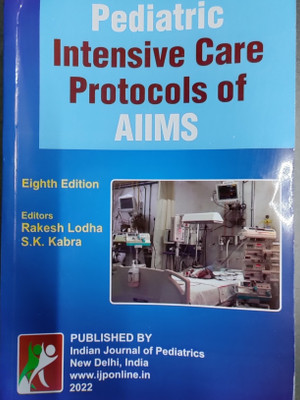Pediatric Intensive Care Protocols Of AIIMS 8ed(Paperback, S K Kabra , Rakesh Lodha)
Quick Overview
Product Price Comparison
One of the most remarkable advances in the care of children in India has beenthe introduction of intensive care. Emergency rooms existed in all pediatric unitswhere immediate care was provided to sick infants and children. However, it wasrealized that full ime in-ICU staffing and patient care will result in improvedoutcomes for critically ill pediatric patients. The first unit to be set up in this frontierarea in India was at the All India Institute of Medical Sciences in Delhi in the1980s. Initially the pediatric staff had to learr intubation from theanesthesiologists, but practice soon made them even more skillful in resuscitationprocedures than their mentors. A review of the functioning of this intensive careunit a few months later effectively demonstrated that many more lives were savedwhich would otherwise have been lost.Experts abroad have argued that countries with under-5 mortality rates above40 or so should spend more money on primary care to reduce infant and childmortality rather than establish intensive care units which admittedly are costly.Ihave always believed this argument to be fallacious, simply because every childwho is ill deserves the best care that can be provided according to the localresources. Moreover, in the cities in India the infant mortality and under-5 mortalityrates are sufficiently low that it is desirable to establish intensive care unitsIt is well recognized that a protocol-based approach is of great help inimproving the care of an acutely ill child. We at the Indian Journal of Pediatrics feltthat it would be advantageous to present the protocols that had been evolvedthrough years of experience and research at the AllMS. Professor Kabra and hiscolleagues have succeeded admirably in putting together the protocols used inIndian pediatric intensive care units. These have been designed to be used bothas a source of readily accessible information and as a concise yet comprehensivesummary of current knowledge and practice in intensive care. It is hoped that theywill assist clinicians in their daily practice. The editors have made every effort toensure that the protocols are clinically focused and evidence based. We deeplyappreciate their extraordinary efforts, their dedication, and their commitment toexcellence. It is hoped that the readers would find these protocols useful. Wewould appreciate feedback from them so that future editions can be improvedupon.


